Narcissists are some of the most abusive people on the planet. They use so many different manipulation tactics to gain power and control over you so it is very important that you learn how to protect yourself from a narcissist.
The best way to protect yourself from a narcissist is to use techniques that are designed to prevent them from gaining power and control over you such as setting healthy boundaries, the Gray Rock Method, the Yellow Rock Method, the Firewall Method, the No Contact Method, or the Low Contact Method.
This article is going to guide you through all of these techniques so that you can grasp a better understanding of how you can protect yourself from the narcissist in your life.
Set Healthy Boundaries
The term “boundaries” refers to limits that you can set on what you will accept of another person’s words or actions.
The APA Dictionary of Psychology describes boundaries as “a psychological demarcation that protects the integrity of an individual or group or that helps the person or group set realistic limits on participation in a relationship or activity.”
In their simplest forms, boundaries are supposed to be easy to set and maintain because they are a verbal set of rules that you can set with someone else (image below).

In their most complex form, boundaries can be more difficult to set and maintain because they are a nonverbal set of rules that are often tailored to who you are as a person (image below).

In a healthy relationship, you are given the time, respect, support, validation, and reassurance that you need to feel comfortable setting boundaries in the relationship.
In narcissistic relationships, boundaries, both simple and complex, are extremely difficult to set and maintain.
Narcissists manipulate the people that they abuse into feeling obligated to not make such a “big deal” about their boundaries.
They also manipulate the people that they abuse into associating setting boundaries with uncomfortable thoughts, feelings, and emotions such as guilt, shame, and fear.
In addition to this, narcissists often deflect the boundaries that you set by setting their own “boundaries” that are difficult for you to follow.
This can throw you off and makes it difficult to even set your own boundaries in the first place.
For example, you may say “please make sure to check in with me before you bring a friend over to our house,” and the narcissist may respond “remember all the times you have brought our next door neighbor into our house without even telling me?”
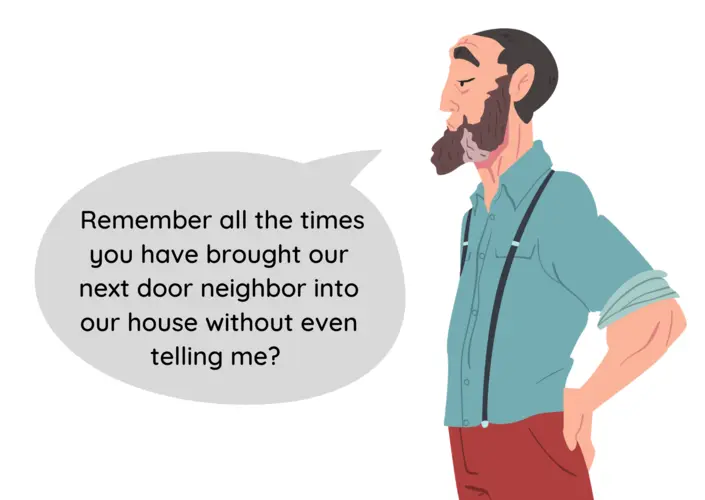
The narcissist’s defensive, “fake boundary setting” is designed to make you defensive (i.e. I told you about friends, not our neighbor, we already had an agreement about our neighbor!).
This will activate your emotions and in turn, make you look like the one who is “out of control.”
Secondly, the narcissist’s “fake boundary setting,” can also gaslight you by making you question your own boundary setting (image below).
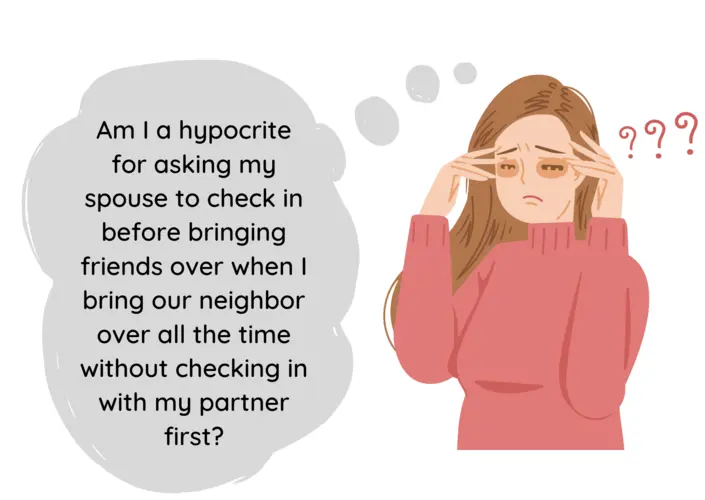
Over time this will manipulate you into developing a belief that you don’t have a right to set boundaries with other people.
This forces you to normalize the abuse that you are experiencing, equate it with healthy behavior, and gravitate towards abusive relationships in other areas of your life
A simple example of this could be someone who grew up in an abusive household finding themselves in an abusive marriage in adulthood.
Without healthy boundaries in place, narcissists can:
- Take control of your thoughts, feelings, emotions, and needs.
- Destroy your self-perception and turn you into a repository for their own painful emotions and self-loathing behaviors.
- Turn you into a reliable source of validation, admiration, reassurance, power, and control.
The absence of healthy boundaries puts narcissists in a position from which they can maintain power and control over you.
Here’s the catch though…
Narcissists are never going to respect, let alone acknowledge, your boundaries.

As a general rule, this is because they don’t see you as a person with thoughts, feelings, emotions, and needs that deserves to be respected.
They see you as an object that they are entitled to using to get narcissistic supply.
In fact, sometimes when you set a boundary with a narcissist, they will end up violating your boundary even more harshly just to punish you.
Experiencing this will leave you feeling helpless, hopeless, and powerless.
Eventually, you’ll just give up on setting boundaries altogether and become trapped in the narcissistic abuse cycle for months, years, and even decades to come.
It is for this reason that the most effective boundaries that you can set and maintain with a narcissist are the ones that you set with yourself.
What does this mean?
It means that the boundaries that you set must originate from conscious and well-informed decision making.
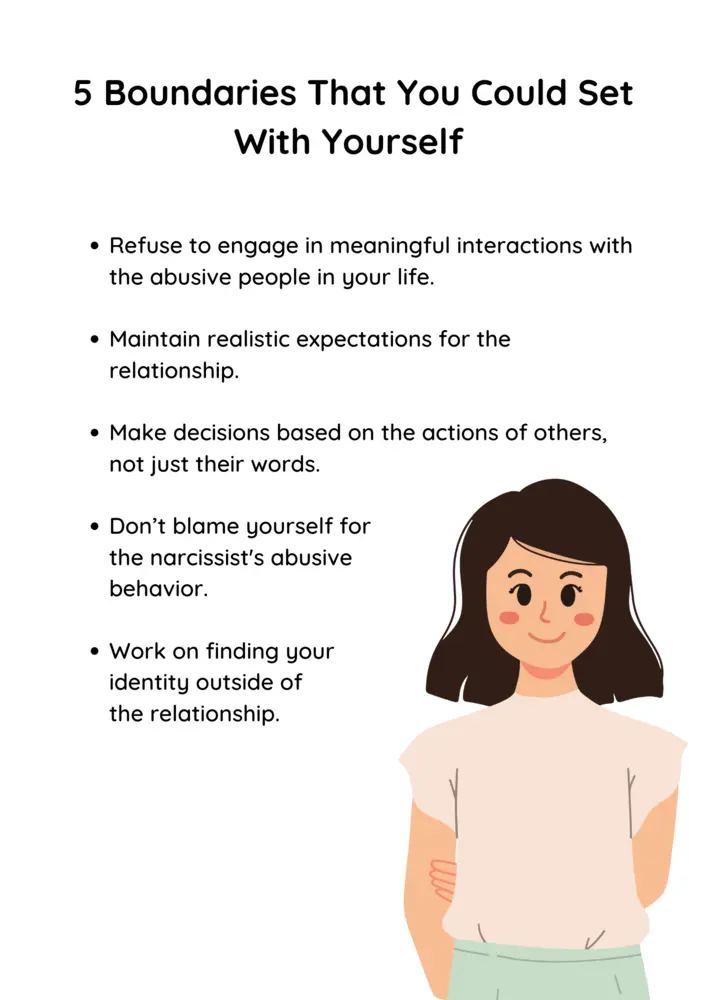
Recommended Article:
Our article “Why Is It Important to Set Boundaries With a Narcissist?“ has important information about setting boundaries with a narcissist.
The Gray Rock Method
The Gray Rock Method is a technique that occurs when you restrain yourself from engaging in meaningful interactions with the narcissist in your life.
The goal of the Gray Rock Method is to make the interactions that you have with them so uninteresting and unrewarding that they label you as “boring” and leave you alone.
A meaningful interaction is any interaction that gives someone access to your thoughts, feelings, emotions, or needs.
For example, imagine that the narcissist in your life said, “I heard that you didn’t get hired at that job that you wanted. I mean, I knew that someone with your education would never get the job but do you want to talk about it?”

This would be considered a meaningful interaction that you should avoid because your response could give them access to your thoughts, feelings, emotions, or needs.
So, instead of saying, “Why do you have to be such a jerk all of the time?”
You could use the Gray Rock Method by saying something like, “I can’t talk about this right now,” and then walking away.
Restraining yourself from engaging in this meaningful interaction means that the narcissist has less opportunities to abuse and/or manipulate you.
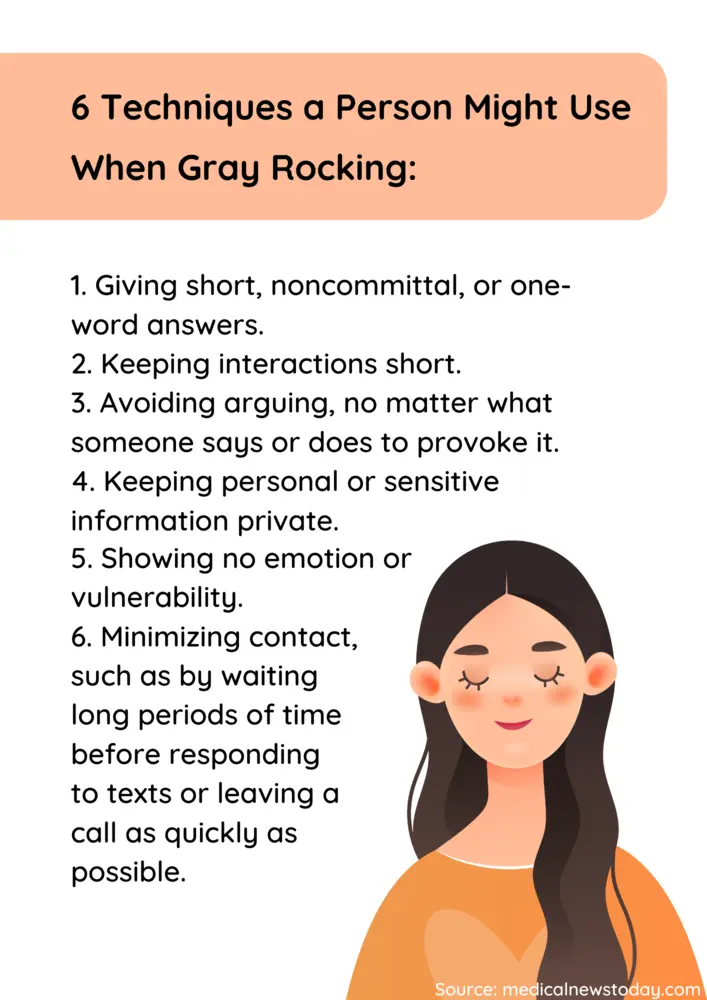
Recommended Article:
Our article “How to Gray Rock a Narcissist (3 Simple Steps)“ is a great guide that you can use to learn how to Gray Rock a narcissist.
The Yellow Rock Method
The Yellow Rock Method is a form of communication that you can use to protect yourself from abuse and manipulation.
Just like the Gray Rock Method, the Yellow Rock Method occurs when you restrain yourself from engaging in meaningful interactions with the narcissist in your life.
Here’s the catch though, when you use the Gray Rock Method, there’s a possibility that you could come off as cold, uncooperative, immature, and arrogant.
For example, in the previous section we told you that a Gray Rock response could be, “Mhmm. I can’t talk about this right now.” And then walking away from the situation.

This response could seem cold, uncooperative, immature, and arrogant to those who don’t know that you are using the Gray Rock Method to protect yourself from abuse and manipulation.
Now, usually there isn’t anything wrong with coming off as cold, uncooperative, immature, and arrogant when you are protecting yourself from abuse and manipulation.
But narcissists are very good at portraying others in a negative light.
So, there are some situations where you should try your hardest to not come off as cold, uncooperative, immature, and arrogant.
This is where the Yellow Rock Method comes in.
You see, when you use the Yellow Rock Method, your approach to dealing with abuse and manipulation is much more professional and respectful.
For example, imagine that you are in the middle of a custody battle with the narcissist in your life.
They send you the following via text:
“Hey I just wanted to let you know that I know that you have started drinking again. The kids come to my house crying and hungry because you are drunk all of the time. I understand this divorce is hard but can you please not take it out on our kids?”

A Gray Rock response to this message would be no response at all.
But you can’t afford to come off as cold, uncooperative, immature, and arrogant in the middle of a custody battle because you could lose custody of your kids!
To prevent this from happening, you could use the Yellow Rock Method by responding with the following:
“I do not feel that these misrepresentations warrant a response and I see no purpose to this text message other than to increase conflict. As such, I am noting my objection and your attempts to portray me in a negative light are noted.”

This is a brilliant response to the text that the narcissist sent because you defend yourself without coming off as cold, uncooperative, immature, and arrogant.
As a general rule, the Yellow Rock Method should be used when coming off as cold, uncooperative, immature, and arrogant could have a negative impact on your life or the life of your loved ones.
The Firewall Method
In narcissistic environments, the term “firewall” refers to a defense system that you can build to protect yourself from the narcissist in your life.
To build a firewall, you need to create your own defense system and construct a defined set of rules that it abides by.
Building a solid firewall puts you in a position from which you can effectively protect yourself from the narcissist in your life.
How can you start building a firewall?
As a general rule, there are five layers of protection in a strong firewall that you will need to develop:
- Knowledge
- Radical acceptance
- The concept of the Gray and Yellow Rock Method
- Caution
- Daily affirmations
Step 1: Acquire Knowledge
The importance of being knowledgeable about narcissistic relationships is immeasurable.
Dedicating as much of your time as possible to learning about abuse will help you (image below):
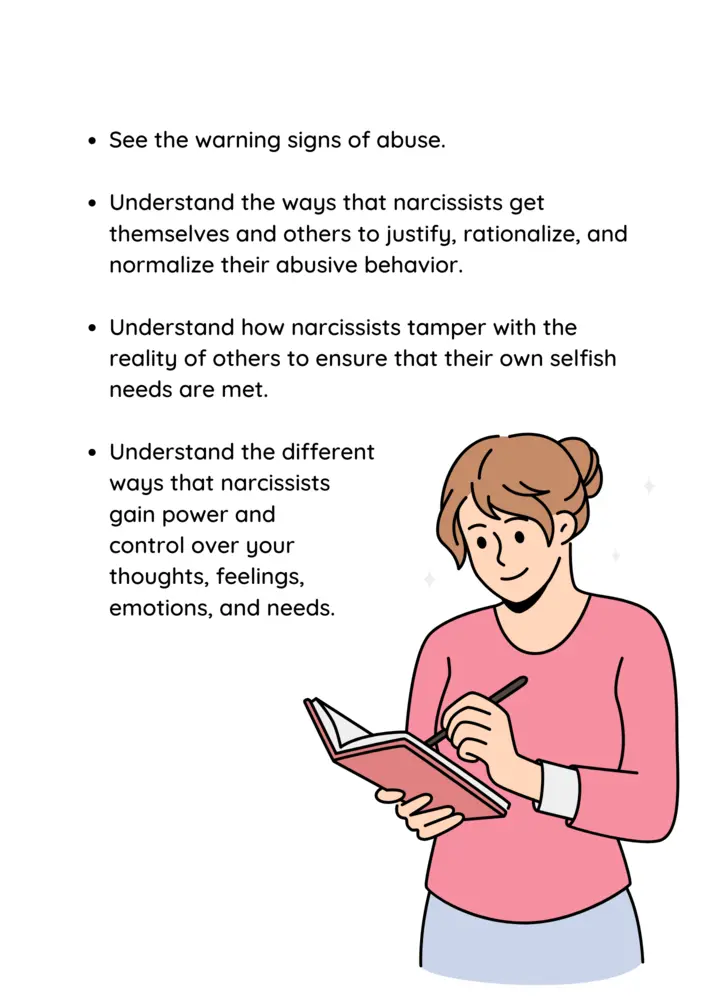
The list could go on forever but the point is that learning about narcissistic relationships is a fundamental requirement for a strong firewall!
Step 2: Practice Radical Acceptance
Radical acceptance is a distress tolerance skill that is designed to keep pain from turning into suffering.
Radical acceptance builds on the skill of mindfulness because when using it you allow yourself to let go of the need to control situations and focus on your wise mind instead of catastrophic thinking.
Using radical acceptance to overcome emotional manipulation and abuse is very hard because it requires you (image below):
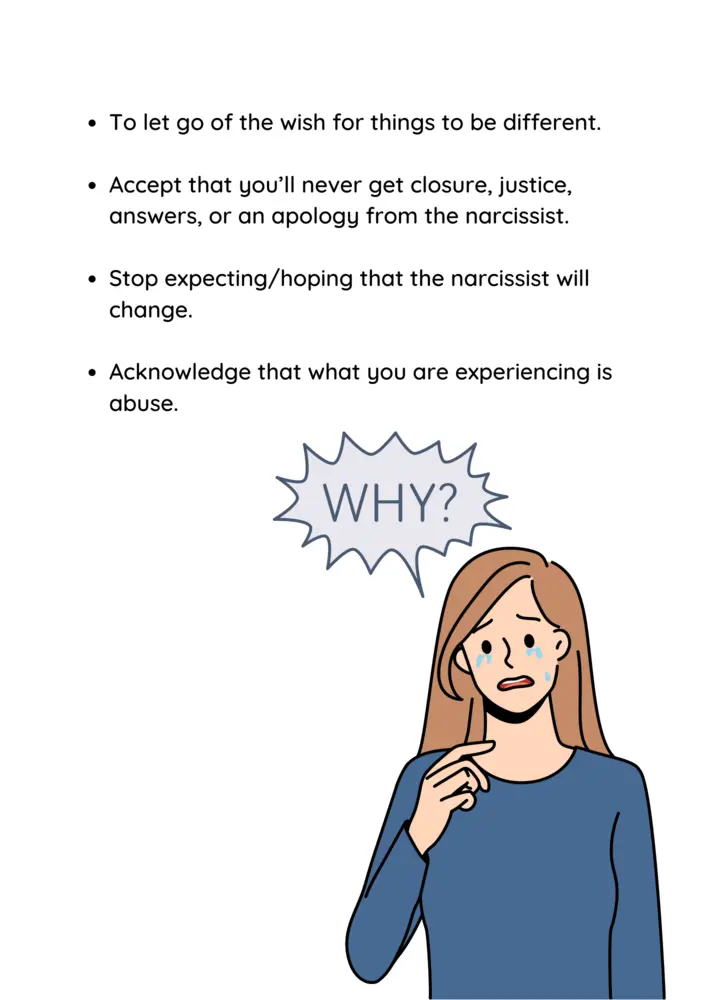
The goal of radical acceptance is indifference, lack of interest, concern, or sympathy, towards the narcissist.
Now, indifference doesn’t mean that the abuse you experienced will no longer affect you.
It means that you completely disconnect your thoughts, feelings, emotions, and needs from the narcissist in your life.
- You won’t care about what they are doing.
- You won’t care about how they are doing.
- You won’t care about when they are doing something.
- You won’t care about why they are doing something.
- You won’t care about who they are doing something with.
You are just completely focused on your own thoughts, feelings, emotions, and needs.
Radical acceptance doesn’t happen overnight.
It takes months, years, and maybe even decades to achieve.
But building a strong firewall requires you to take steps towards radical acceptance on a daily basis.
In an UT Health Houston McGovern Medical School article, Meaghan Warner, LCSW-S has a few tips about how you can practice radical acceptance:
Resistance to accepting a situation causes pain that usually turns into suffering.
This can lead to distress.
Here are a few ways to practice radical acceptance in daily life:
- Acknowledge that you may be fighting reality (ex: it shouldn’t be this way)
- Remain mindful of physical sensations throughout your body (tension and stress)
- Acknowledge that life is worth living, even if there is temporary pain right now
- Repeating to yourself: “I accept this moment as it is” and “Although I and/or my emotions are uncomfortable, I will get through it”
- Understand that the moment is precisely as it should be even though I may not like it
Step 3: Remember the Concept of the Gray and Yellow Rock Method
To build a strong firewall, you must be willing to restrain yourself from engaging in meaningful interactions with the narcissist in your life.
Again, the term “meaningful interactions” refers to any interaction that gives the narcissist access to your thoughts, feelings, emotions, and/or needs.
Staying true to this concept is going to help prevent you from (image below):

Staying true to the concept of the Gray and Yellow Rock Method is crucial for building a strong firewall because it teaches you how to feel comfortable protecting and prioritizing your thoughts, feelings, emotions, and needs.
Step 4: Be Cautious
You need to be very careful when sharing your thoughts, feelings, emotions, and needs with other people.
It is normal to want to find someone that you can be vulnerable with.
But just make sure that you are opening up to someone who will protect the vulnerability that you show them, not exploit it.
When interacting with others, you shouldn’t be afraid to take things slowly.

People who are emotionally safe are going to respect the boundary that you’ve set and allow you to slowly open yourself up in a way that is comfortable for you.
Narcissists are going to try to manipulate you into sharing information with them that they can use to gain power and control over you as quickly as possible.
They will give you little bits and pieces of information that make you feel like there’s a level of mutuality when it comes to being vulnerable in the relationship.
Recommended Listen:
It is common for narcissists to use love bombing to move quickly through relationships. In this podcast episode Dr. Daksha Hirani goes over the boundaries that you can set if this is happening to you.
Step 5: Practice Daily Affirmations
One of the ways that narcissists regulate the painful thoughts, feelings, and emotions is by projecting them onto you.
Projection is a defense mechanism that occurs when someone takes parts of their identity that they find unacceptable and place them onto someone else.
A simple example of this could be a cheating husband accusing his wife of cheating instead of taking responsibility for his own actions.
The painful thoughts, feelings, and emotions that narcissists suppress are the parts of their identity that they find unacceptable.
They project them onto you by abusing and manipulating you.
They do this because it allows them to look at you and think to themselves, “They are the one who is unlovable, unwanted, inadequate, weak, and worthless, not me.”
To construct a strong firewall you have to remind yourself on a daily basis that the narcissist’s abuse does not define who you are and/or who you can be.
A fantastic way that you can do this is practicing daily affirmations.
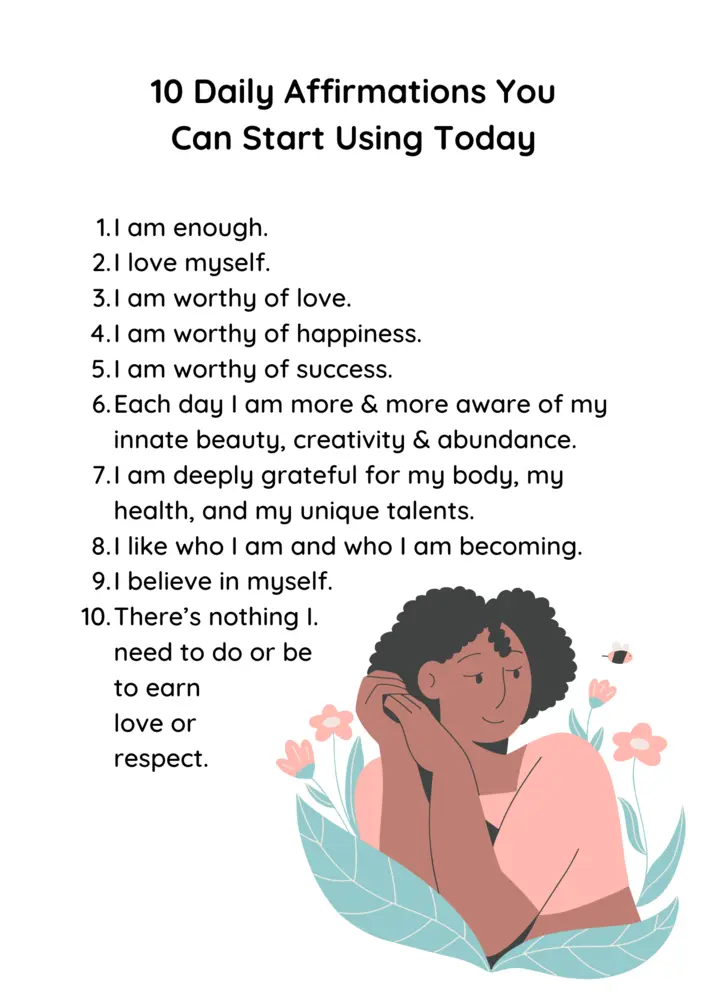
The No Contact Method
The No Contact Method involves ending all physical and psychological forms of contact that you have with the abusive person in your life.
This may look like:
- Not responding to their text messages or phone calls
- Not agreeing/promising to meetup with them or “stay in touch”
- Not checking up on their social media or keeping tabs on their posts
- Not gathering information about their lives through your friends or spending all your time talking about them
- Not accepting gifts or favors (no matter how tempting) from them
- Not listening to music that you associate with them
- Not digging up old photographic memories of them (with or without you in them)
- Taking proactive steps to heal yourself from intrusive, unwanted, and traumatic painful memories
The Low Contact Method
The Low Contact Method is a variation of the No Contact Method but it also incorporates the concept of the Gray and Yellow Rock Method.
It’s best to use this technique when you can’t go No Contact or when you have to break No Contact for some reason such as a funeral, a wedding, a court case, etc.

Using the Low Contact Method essentially means that you become very selective about where, when, how, and why you cross paths with the high-conflict people in your life, and when you do, you restrain yourself from engaging in meaningful interactions with them.
About the Author

Hey, I’m Elijah.
I experienced narcissistic abuse for three years.
I create these articles to help you understand and validate your experiences.
Thank you for reading, and remember, healing is possible even when it feels impossible.
